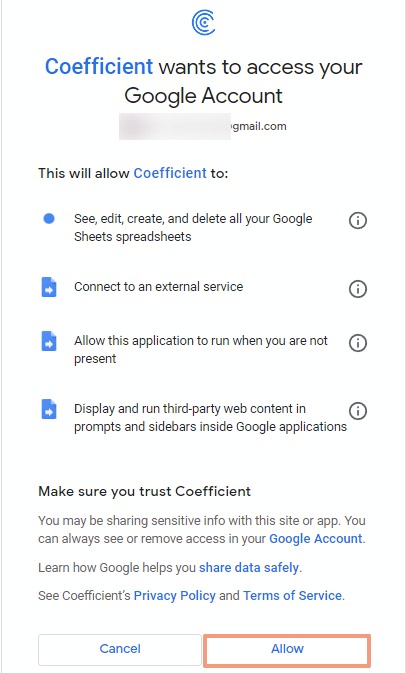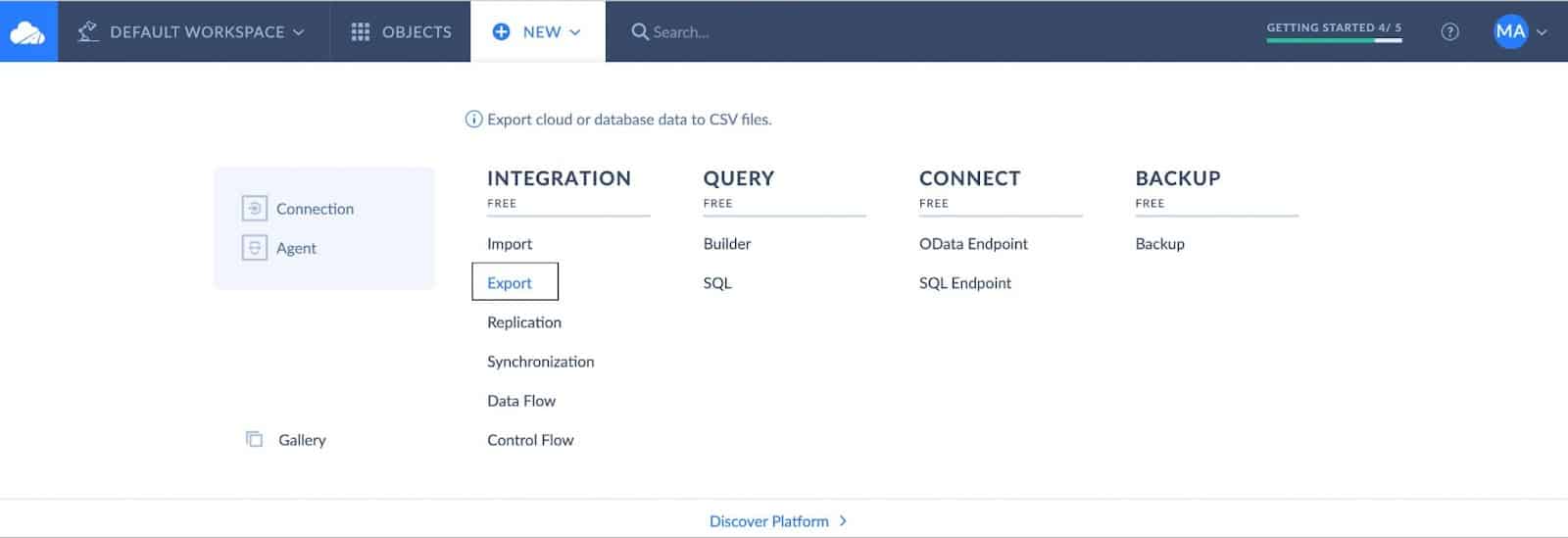For SalesOps managers and other business users, exporting data from PostgreSQL is often a difficult process. SalesOps managers lack the SQL programming skills to facilitate data exports in PostgreSQL.
And even if they do learn the necessary SQL commands, the process is very time-consuming. They must execute the code, download CSV files, and manually copy-paste the data into their spreadsheets.
We hear this complaint about exporting data from databases frequently from our customers. That’s why we want to create a centralized blog showcasing the top methods for exporting data from PostgreSQL.
Here are the top 3 methods for exporting data from PostgreSQL, from manual SQL code, to full automation with Coefficient.
Why Export Data from PostgreSQL?
With native CRM platforms such as Salesforce and HubSpot, why would SalesOps managers want to pull data from PostgreSQL? A PostgreSQL database can enrich the sales data that SalesOps managers rely on every day.
PostgreSQL offers data from many different systems in a centralized database. A PostgreSQL database also has important sales and customer metrics that have already been transformed by SQL. SalesOps managers can use this PostgreSQL data to augment their forecasting and dashboarding.
Why Export CSV Files from PostgreSQL?
For SalesOps managers and other business users, extracting data from PostgreSQL is not typically easy. For starters, most business users do not know SQL, and cannot leverage PostgreSQL in any capacity.
That’s why business users often turn to the data team to access PostgreSQL data. But the data team operates based on a long, crowded queue. And waiting in this queue slows business users down considerably. As a result, 63% of business users fail to receive insights on their required timeframes.
To top it off, many of the systems that business users utilize do not offer integrations with PostgreSQL. For business users, the best option is often to memorize snippets of SQL so they can export PostgreSQL data into a CSV file. Then, after all that, they must copy-paste the data into their preferred data analysis platform: spreadsheets.
If the whole process sounds inefficient and convoluted, that’s because it is. Fortunately, there are other options that automate PostgreSQL data pulls. Read the section below to discover all the different ways to export data from PostgreSQL.
How to Export Data from PostgreSQL: Top 3 Methods
Method 1: Coefficient
Pulling data from PostgreSQL often requires you to execute numerous importing, exporting, and syncing tasks. Many of these steps involve coding in SQL. However, thanks to Coefficient, SalesOps managers can pull their PostgreSQL data into Google Sheets without the hassle. Here’s why:
- Coefficient pulls in PostgreSQL database data quickly. All that’s required is the database connection details.
- Coefficient data inline previewer allows users to filter their PostgreSQL data tables to only export what they need. Users with programming skills can also run queries against the database.
- Coefficient lets you connect to multiple databases on the same Google Sheet, allowing you to combine data from various sources to produce robust datasets that fuel in-depth business analysis.
Follow the steps below to export data from PostgreSQL into Google Sheets by using Coefficient.
Step 1: Install the Coefficient add-on in Google Sheets by clicking Extensions on the top menu. Then navigate to the Add-ons menu from the dropdown and click Get add-ons.

Enter Coefficient in the Google Workspace Marketplace search bar. Click the Coefficient app and follow the steps to finish the installation.

Select your Google account. Click Allow to authorize Coefficient’s access to the required permissions to complete installation.

After installation, launch the Coefficient app from the Google Sheets menu. Click Extensions>Coefficient: Salesforce, HubSpot Data Connector>Launch.
Coefficient will launch as a side panel in Google Sheets. Now you can start pulling data from PostgreSQL into your Google spreadsheet.

Step 2: Click Import from the Coefficient side panel on the right side of the screen.

Click PostgreSQL from the listed data sources

Choose whether to import from tables, or by using SQL queries. Coefficient allows you to run SQL queries atop your PostgreSQL database directly from Google Sheets
Then select Import from tables.

Enter the required details like host, database username, password, port, and IP addresses to enable the database connection.

Click Connect. After a successful connection, Coefficient will load the PostgreSQL schema.

Select the data and table you wish to import. Coefficient provides a data inline previewer for PostgreSQL. This inline previewer provides a GUI that allows users to import tables, columns and data.
The previewer also lets you apply custom filters and limits to your imports, meaning you don’t have to use SQL queries to pull your data.

Click Import. Your data will auto-populate the spreadsheet in seconds.

Method 2: Basic SQL TO CSV
You can copy data from PostgreSQL to your local system by using the COPY command in SQL.
With the COPY Command
The COPY command can involve two different scenarios:
If you want to copy all the columns from your database table into a CSV, leverage the following statement:
COPY tutorial TO 'file path' DELIMITER ',' CSV HEADER;
The command above copies a table with all its columns to a CSV.
If you only want to include specific columns from a table in the CSV export, include the columns to copy in parentheses after the table name:
COPY tutorial(first_name,last_name,email) TO 'file path' DELIMITER ',' CSV HEADER;
Copy Files with the copy Command
When a PostgreSQL server cannot be read, you can generate a CSV file by using copy, a built-in PostgreSQL command.
copy is exactly like the COPY command, except the server does not write the CSV file. Rather, psql writes the CSV file to your local system.
Here’s how to copy all the columns in a table to a CSV file by using the copy command:
copy (SELECT * FROM tutorial) to 'Users/kevin/Downloads/test/raw_data.csv' with CSV;
The command above extracts all the columns in ‘tutorial’ (our sample database table) into a CSV file ‘Users/kevin/Downloads/test/raw_data.csv’
Method 3: Export PostgreSQL Data with Skyvia
Here’s how to create a Skyvia-PostgreSQL connection to import data from our PostgreSQL database and export it back to CSV.
Skyvia is a no-code cloud integration platform that extracts, transforms, and loads data from multiple sources like CSV files, SaaS, and databases. In addition, Skyvia allows users to schedule imports and provides backups for fault tolerance.
First, sign in to your Skyvia account. Sign up if you’re a first-time user.

After signing in, click New, and then select Connection from the left menu.

Select PostgreSQL from the connector page list. You can enter the database name in the search bar.

Insert your PostgreSQL connection details like server, user ID, port, and Password, database name and click Create Connection.

Click Test Connection to test our database connection. A successful connection message pops up on the top-left of the screen.

Now let’s export PostgreSQL data to a CSV. Click New and select Export under the Integration menu.

Enter PostgreSQL as the connection source under the Source and select CSV(Download manually) under Target

Click Add new under Task. The task editor will pop up.
Select the object you wish to export. In this case, we will select the user’s object and filter to get the columns we want.

Click Next step to view the output columns and click Save.

Choose Save on the default workspace.

Click Run to begin the export. A pop-up will display on the screen to confirm your permission. Click OK.


Click Monitor and view the result of your run. A successful export will look like the one shown below.

Export Data from PostgreSQL: What Works for You?
There are a number of ways for business users to extract data from PostgreSQL, but Coefficient is by far the easiest option. Coefficient automatically extracts PostgreSQL tables and columns directly into your Google spreadsheets. That means you don’t need to learn or memorize any SQL. Try Coefficient for free now and start pulling PostgreSQL data into your Google Sheets instantly.





